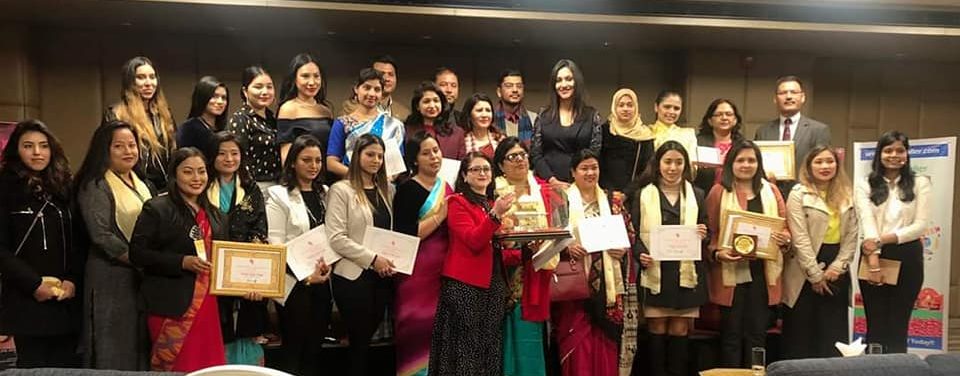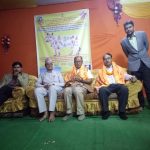
Poverty Alleviation Fund (PAF)was established in 2020 as a special and targeted programme to bring the excluded communities in the mainstream of development, by involving the poor and disadvantaged groups themselves in the driving seat of development efforts. So, PAF seeks to o improve living conditions, livelihoods and empowerment among the rural poor, with particular attention to groups that have traditionally been excluded by reasons of gender, ethnicity, caste and location.
STRATEGIES
The strategies of PAF will be:
- To develop programmes with specific target of reducing poverty in its areas of operations within a given timeframe;
- To promote community based demand driven approach using rigorous social mobilization techniques in order to reduce poverty by bringing poor at the centre of development and by treating poor as subjects instead of objects;
- To ensure holistic development intervention and partnership building that guarantees discernible impact on the livelihood of the poor;
- To enable rural people to obtain quality basic services in cost-effective and sustainable manner with their direct involvement in identification planning, designing, executing and operating & maintaining the schemes; and
- To build PAF as an independent, autonomous and a professional organization sensitive to the needs and aspirations of the poor.
APPROACHES
Demand Driven Program
PAF has adopted demand led community-based approach to alleviate poverty. Keeping the target communities at the driving seat, it encourages them to take initiatives to improve their livelihoods, particularly organizing them into community organizations.
The target communities are the sole actor. They plan what they need and prioritize on the basis of their capacity and local resource potentials.
Direct Community Funding
PAF has developed Direct-funding mechanism to community for the effective implementation of the sub-projects proposed by the community.
It provides resources directly to the poor, and thereby expects to bring efficiency and transparency of the work, and ensure community ownership. PAF is guided by the principle that the poor themselves are the best source of information and the best to manage their needs and resource.
Community Cost Sharing
Community cost sharing/community contribution is mandatory for sustainability and ownership building of the sub projects. Furthermore, 20% for infrastructure sub projects and 10% for Income generating sub projects is needed as community contribution.
Community Institution Building
PAF envisages developing the Community Organizations (CO) as an established institution in the long run. For this purpose, the Community Organizations are being facilitated by Partner Organizations for planning, designing and management of the sub projects by themselves.
High Transparency in Process
PAF believes in transparency in technical and financial process of the sub projects. For this purpose, the PAF has made provision for maintaining display boards at the project sites and carry out Public Audit periodically or at the end of the sub projects.
Co-ordination
One of the objectives of PAF is to strengthen local bodies (DDCs and VDCs) and support long term decentralization process. Thus, coordination/networking with the local bodies and other line agencies as well as other development organizations has been taking continuously.
Capacity Building
This component emphasizes on building the capacities of groups and individual beneficiaries through training, linkage, exposure visits and technical assistance. This will enhance the capacity of communities to implement the schemes in cost-effective manner and to operate these schemes in sustainable manner. This component also includes capacity building of local bodies, micro-finance intermediaries and support for Information, Monitoring and Evaluation.
Partner Organization as Facilitator
Based on the eligibility criteria set by PAF, qualified and eligible Partner Organization (PO) are selected from among Community Organizations (COs), Non Governmental Organizations (NGOs), Private Sector Organizations (PSOs), and Local Government Organization (DDCs/VDCs) for social mobilization, technical assistance, and capacity building programmes.
The partner organizations will work for social mobilization and capacity building of the community organizations as well as facilitate the community organizations in preparing proposals and implementing the sub projects. Furthermore, the POs are responsible for the smooth implementation and monitoring of the community sub projects.
Partnership forging with development partners and related stakeholders is the working modality of PAF to reduce the extreme form of poverty.
A. Partnership with POs
B. Selection of District and VDC
C. Selection of Households/Settlements
D. Community Organization (CO)
E. Community Sub-Project Funding
F. Community Sub-Project Implementation
G. Monitoring of the programme
Approaches
SOCIAL MOBILIZATION
The social mobilization process has been taken as one of the key programme components of Poverty Alleviation Fund (PAF). The objective of the social mobilization is to create awareness among the community people (poor women, Dalit and Janajati), help them to organize, empower them for decision-making so that they can identify and prioritize their needs. It is also expected to build up capacity for preparation, implementation, operation and management of community subprojects to enhance their livelihoods.
Partner Organizations (POs) identify the settlements of target communities based on the secondary information available in the district: ethnicity, income level and access to basic service facilities. The consultation is done with concerned stakeholders and key informants. After identification of the settlement, POs facilitate communities for participatory social assessment/well-being ranking. Individual households of a settlement are categorized as the hardcore poor, medium poor, poor and non-poor by the communities themselves.
Hardcore poor, medium poor and poor are encouraged to organize into Community Organizations (CO) to ensure that the poor take decisions for themselves. Keeping the target communities at the driving seat, it encourages to take initiatives to improve their livelihoods, particularly organizing them into Community Organizations. Community Organization (CO) is formed with membership from the defined households during social assessment. At least 80 per cent of the CO members have to be poor women, Dalits and Janjatis. It is also mandatory that 50 per cent members of a CO should be women and key positions (Chairman, Treasurer and Secretary) must be fulfilled by poor woman, Dalit and Janjatis.
Community Organization (CO) with active participation of each member enlists problems, interests, needs and aspirations. After seeking necessary and relevant information, Community Organization (CO) identifies and prioritizes community sub-projects based on informed choice through a participatory manner. Community Organization (CO) also seeks necessary help and facilitation from Partner Organization (PO) for technical assistance, particularly in survey, design, market study, prefeasibility and feasibility studies. Economically, socially and environmentally viable community sub-projects, prepared with participatory Community Action Planning (CAP) process, are selected and developed into the community proposals and related project is implanted in the community. All this social mobilization is facilitated by Partner organization (PO).
CAPACITY BUILDING
Generally, the poor have very little capacity to access/exploit different resources, and also to work in multisector programme. It is imperative that the Community Organization has a capacity to execute the development initiatives effectively and efficiently.
PAF has taken ‘Capacity Building’ as one of major functional components. PAF believes capacity building is the endevour to increase knowledge and skill for a definite purpose, which improves, change and moulds one’s knowledge, skill, behavior and attitude towards the maximum possible output/ performance. Capacity Building is an instrument to uplift the poor.
PAF helps to support ‘Capacity Building’ on community level, partner organization level and PAF level as well. The capacity enhancement of the CO and PO makes the local level institutions self- reliant. It is envisaged that local level institutions shall be permanent institutions in the district even after the project is phased out.
Entrepreneurship Development

We are working on making capacity development to youths via many programs to foster their development. We have conducted more than 1000 youths training program and some of it are on our Youtube.
We also have our event coverage on our Facebook page as well where we share about our work done. We work for training and development, business setup support, search for local funds, search for market for their products and help to maintain their data via our software. Out theme is “If you don’t find job, Become Entrepreneur”. To learn more about it please do write us at rstca.mgmt@gmail.com.
INCOME GENERATION
Income generation by self-employment or small businesses creates rural employment. PAF has been focusing on this pressing issue of rural unemployment and under-employment. Since the world has witnessed the successes of small businesses (popularly known as microenterprises), PAF has incorporated this as one of its major programme components. From the identification of potential entrepreneur to the product sale, PAF provides longitudinal services in skill development, business literacy, technology, access to credit and sale. The process of micro-enterprise development also begins with social mobilization. Based on the resource potentials and entrepreneurial capability, the process of micro-enterprises creation begins.
For income generating activities, PAF provides 90 per cent grant to COs to launch activities, exclusively for the target groups. The groups or CO members borrow money from CO’s Revolving Fund in the form of loan to launch Income Generating Activities (IGAs).
The participants pay back the loan on an instalment basis to the COs. Hence, the Fund revolves within the CO to support the financial requirement of target communities. Apart from this, group saving is also encouraged. To add value to their product and for market development. PAF also supports target communities to implement infrastructures related to create business linkages.
RURAL COMMUNITY INFRASTRUCTURE
Rural Community Infrastructure is one of the major programme components of PAF. PAF promotes access to the target communities empowering and helping them to develop social and economic community infrastructures. Such infrastructures are implemented, managed and maintained by the beneficiaries themselves. Community infrastructure are linked with target communities’ livelihood improvement, and include rural roads, trails, mule tracks, culverts, suspension bridges, truss bridges, short distance gravity cable ways, river bed land reclamation, drinking water systems including sanitation, water management – plastic tanks, sprinkler/drip systems, and farmer-managed small irrigation systems, collection centers and market including rural energy systems.
Proposals of the community infrastructure sub-project prepared by the Community Organization (CO) with the help of Partner Organization (PO) are submitted to PAF for funding and implementation.
The proposals include:
Infrastructures which contribute to improving basic health conditions especially of women, children and vulnerable groups such as drinking water, sanitation facilities, alternative source of energy like micro-hydro, improved stoves etc.
Infrastructures that increase agriculture production, cropping pattern and intensity such as community-based irrigation etc.
Infrastructures that ensure access to the market centre for local products such as agriculture roads, trails, culverts, bridges and community buildings etc.
Infrastructures that enhance human capital such as primary schools, health posts, conference halls etc.
Infrastructures with innovative ideas and technology
Community themselves identify, demand, take part in planning, implementation, operation and maintenance of community infrastructures. Infrastructure sub-project has linkage with IG activities so that after intervention it may generate employment and income, increase productivity to secure sustainable livelihoods.
Before approval of proposals for implementation of sub-projects, technical and social appraisal is carried out to verify eligibility criteria and requirements through site visits and checking of technical reports of the sub-projects. Similarly, environmental and social assessment of all subprojects are carried out through environmental and social screening by completing environmental and social check-list format and mitigation measures are suggested with management action plan for adverse environmental and social impacts. If environmental and social impacts are significant, further environmental and social assessment is carried out in the form of Initial Environmental and Social Examination (IESE).
COMMUNITY OF COOPERATIVE DEVELOPMENT
गरिबी निवारण कोषद्वारा प्रवर्द्धित सामुदायिक संस्थाहरूलाई सहकारीमा रुपान्तरता गर्ने उद्घोष गरेका थिए । बजेटमा उद्घोष भएअनुसार सरकारले यी संस्थाहरूलाई सहकारीमा रुपान्तरण गराउने गरी गृहकार्य सुरु समेत गरेको छ ।
बजेट कार्यान्वयनका लागि २० जेठमा नै संघीय मामिला तथा सामान्य प्रशासन मन्त्रालयले सबै ६४ जिल्लाका स्थानीय तहहरूलाई गाउँसभा-नगरसभामा सहकारीमा रुपान्तरण गर्ने प्रस्ताव लैजान परिपत्र गरेको छ ।
उता गरिबी निवारण कोषले पनि यसका लागि आवश्यक गृहकार्य सुरु गरेको छ । सबै सामुदायिक संस्थाहरूलाई सहकारीमा रुपान्तरण गरी रोजगारी प्रवर्द्धन गर्नेसम्बन्धी अवधारणा पत्र समेत बनाएर कोषले काम अघि बढाइसकेको छ ।
कोषका उपाध्यक्ष निर्मल भट्टराईले त्यस्ता संस्थामा १९ अर्ब घुम्ती कोष रहेको र त्यसलाई नै बिउपुँजीको रुपमा प्रयोग गरी ती संस्थाहरूलाई सहकारीमा रुपान्तरण गरिने बताए । कोषले प्रवर्द्धन गरेका ३२ हजार २७६ वटा संस्थाहरू छन् । यी संस्थाहरू ६४ जिल्लाका ५५१ वटा स्थानीय तहमा फैलिएका छन् ।
नौ लाख घरधुरी यस्ता सामुदायिक संस्थाहरूमा आबद्ध छन् भने ४९ लाख जनसंख्या यसबाट लाभान्वित भएको कोषको तथ्यांक छ । मुलुक संघीय संरचनामा गए पनि एक स्थानीय तह कार्यक्षेत्र भएका सहकारीहरूको नियमनको अधिकार सम्बन्धित स्थानीय तहलाई नै दिइएको छ । यी संस्थाहरू पनि स्थानीय तहकै निगरानीमा हुने उपाध्यक्ष भट्टराईले बताए ।
अहिले देशभर करिब ३५ हजार सहकारी संस्थाहरु रहेका छन् । सबै सामुदायिक संस्थालाई सहकारीमा रुपान्तरण गर्ने हो भने सहकारीको संख्या ६७ हजार पुग्ने देखिएको छ । तर कोषका उपाध्यक्ष भट्टराई भने चार हजार वटा सहकारी बनाउने गरी काम भइरहेको बताउँछन् ।
उनका अनुसार एउटा वडामा जति संस्था भए पनि एउटा सहकारी बनाउने योजना रहेको छ । मानौं, एउटा वडामा ५ वटा सामुदायिक संस्था रहे पनि त्यहाँ भएका सबै सदस्यहरूको सेयर रहने गरी एउटा सहकारी बनाइनेछ ।
to apply for fund kindly mail us at foundation@rstca.org.np
674 total views, 1 views today























